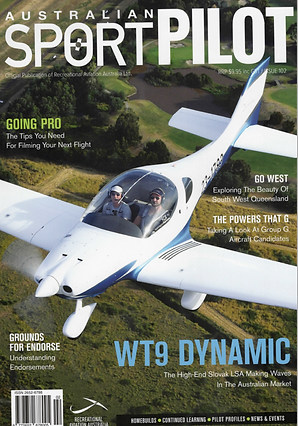
...A good place to start a Pilot appraisal is often from a distance; from there sometimes features such as the undercarriage’s base and track, prop clearance, and fin area are more apparent. And as the WT9 taxied towards me it certainly did look good.
From the sharply-pointed spinner through the wide cockpit to the elegantly elongated empennage, I thought it looked great, and my initial impressions of a top-quality, well-made machine were reinforced on closer inspection.
As you’d expect of a high-performance 21st century VLA, reducing total drag was high on the designer’s priorities. Indeed, the quality of the overall finish is on a par with that of a modern high-performance sailplane (Aerospool supplies airframe components to German glider manufactures).
The WT9 is extremely well made. The wings, fuselage and tailplane are constructed entirely of composites and beautifully finished. The main spar and all other load-bearing structures are made with carbon fibre-reinforced polyester, while the wings, tailplane and fuselage use an aramid foam core covered with GRP skins. An interesting anomaly is that the leading edges on the aerodynamic ‘stall strips’ mid-wing are almost sharp enough to cut yourself on...Read More At PilotWeb.Aero

Victorian winemaker Richard Rackley is in that enviable position. His Aerospool WT9 Dynamic is currently the only on the civil register, which–given the capabilities of this Slovakian design–may be aviation’s biggest mystery since Smithy disappeared.
Dynamic construction is largely composite sandwich shell with carbon fibre as the main material. VH-JRR was built in the days when it was common practise not to put a lot of colour on composites, so Rackley’s aircraft is plain white with some burgundy striping to add a touch of flair.
Under the cowling is concealed a 100 HP Rotax 912 with a slipper clutch, swinging a three-bladed 1700 mm diameter Woodcomp prop. The prop is a constant-speed, variable-pitch activated electronically. The combination of these two produces a max speed in the cruise of 132 knots and a rate of climb close to four figures.

.png)
.png)